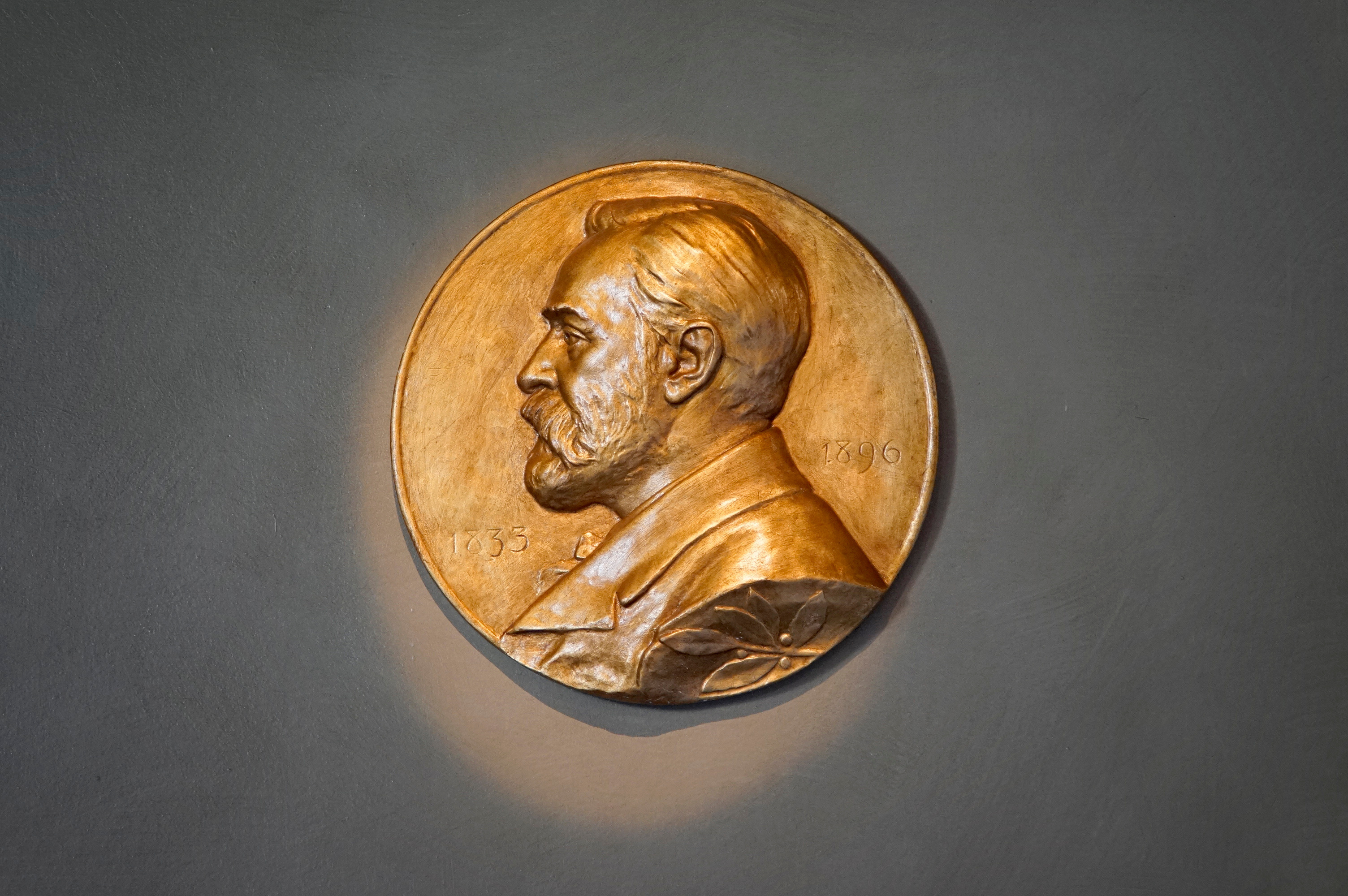
By Sarah E. Glass
Vanderbilt University and Vanderbilt University Medical Center have historically distinguished themselves by fostering excellence and cultivating major advancements. As one of the top 50 U.S. universities with the most Nobel Prize winners, Vanderbilt stands as a cornerstone of scientific achievement and ground-breaking research. Here we focus on four of these Nobel laureates, their scientific discoveries, and the Vanderbilt researchers currently building upon their work and expanding their enduring legacy.
Stanley Cohen
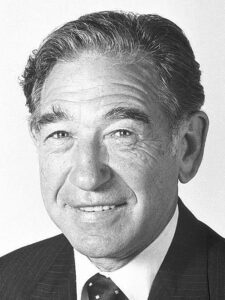 Cohen, distinguished professor of biochemistry emeritus, was already conducting Nobel Prize–winning research by the time he arrived at Vanderbilt University in 1959. Cohen and Rita Levi-Montalcini are credited with discovering the first growth factor, called nerve growth factor, while at Washington University in St. Louis in 1956. Growth factors are signaling molecules that stimulate cell processes such as proliferation.
Cohen, distinguished professor of biochemistry emeritus, was already conducting Nobel Prize–winning research by the time he arrived at Vanderbilt University in 1959. Cohen and Rita Levi-Montalcini are credited with discovering the first growth factor, called nerve growth factor, while at Washington University in St. Louis in 1956. Growth factors are signaling molecules that stimulate cell processes such as proliferation.
Once at Vanderbilt, Cohen continued this fruitful line of investigation to discover another growth factor, epidermal growth factor. It is now well established that EGF and its receptor, EGFR, are intimately involved in regulating cell growth, differentiation, and survival, which are deregulated in cancer. Cohen and Levi-Montalcini received the Nobel Prize in Physiology or Medicine in 1986 for these discoveries.
Cohen’s research on EGF has informed the work of Vanderbilt investigators like Robert Coffey, Ingram Professor of Cancer Research and professor of cell and developmental biology, and Dr. Christine Lovly, associate professor of medicine and Ingram Associate Professor of Cancer Research, who study the role of EGFR signaling in colon and lung cancer, respectively. Lovly’s laboratory and clinical research focus on the role of EGFR and other ErbB family members in the development and treatment of lung cancer.
Countless patients are indebted to the work of Cohen and his colleagues as it has led to a variety of drugs—such as cetuximab—that treat cancer by targeting EGFR.
Stanford Moore
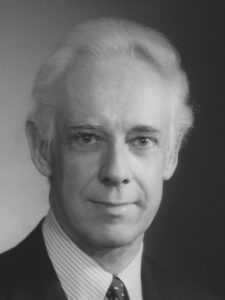 Moore graduated from Vanderbilt University with an undergraduate degree in chemistry in 1935. With this strong scientific foundation, he launched his research career at Rockefeller University by studying enzymes with a chemical approach. There, Moore and colleague William Stein developed an amino acid analyzer to determine the amino acid sequences of enzymes such as ribonuclease, which can cleave RNA. They won the Nobel Prize in Chemistry in 1972 for their work on ribonuclease.
Moore graduated from Vanderbilt University with an undergraduate degree in chemistry in 1935. With this strong scientific foundation, he launched his research career at Rockefeller University by studying enzymes with a chemical approach. There, Moore and colleague William Stein developed an amino acid analyzer to determine the amino acid sequences of enzymes such as ribonuclease, which can cleave RNA. They won the Nobel Prize in Chemistry in 1972 for their work on ribonuclease.
Moore returned to Vanderbilt in 1968 as a visiting professor in health sciences. His discoveries live on in the research studies of John Karijolich, associate professor of pathology, microbiology, and immunology, who studies the role of ribonucleases and their interacting partners in diseases such as cancer.
Max Delbrück
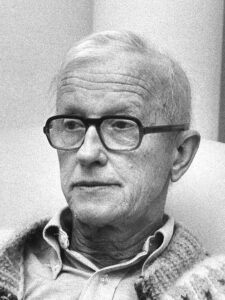 Delbrück embodies the strong heritage of interdisciplinary and collaborative excellence widespread at Vanderbilt. Although originally recruited as a physics instructor in 1940, he began conducting research in a biology lab and collaborating with Salvador Luria, a microbiologist at Indiana University. His theoretical physics morphed into practical biology as he determined that a bacteria’s resistance to viral infection was dependent upon random mutations. Delbrück was awarded the Nobel Prize in Physiology or Medicine in 1969 for his discoveries, which now inform the work of many researchers.
Delbrück embodies the strong heritage of interdisciplinary and collaborative excellence widespread at Vanderbilt. Although originally recruited as a physics instructor in 1940, he began conducting research in a biology lab and collaborating with Salvador Luria, a microbiologist at Indiana University. His theoretical physics morphed into practical biology as he determined that a bacteria’s resistance to viral infection was dependent upon random mutations. Delbrück was awarded the Nobel Prize in Physiology or Medicine in 1969 for his discoveries, which now inform the work of many researchers.
Hassane Mchaourab, professor of molecular physiology and biophysics, has followed a similar path by applying his physics training to biological questions. His focus on protein dynamics led him to tackle how bacteria and cancer acquire drug resistance phenotypes. More recently, he is leveraging his physics training to embrace the recent revolution in artificial intelligence and machine learning methods within protein science.
Earl Sutherland
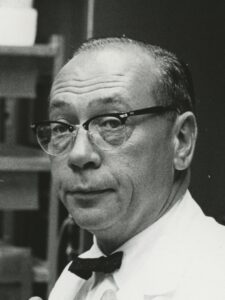 Another Vanderbilt Nobel laureate was Earl Sutherland, professor of physiology. While at Case Western Reserve University, Sutherland discovered cyclic AMP, a molecule that works as a second messenger for many signaling pathways. Sutherland moved to Vanderbilt in 1963 and identified cAMP as the second messenger for epinephrine signaling, demonstrating that hormones are not the sole contributors to signaling cascades.
Another Vanderbilt Nobel laureate was Earl Sutherland, professor of physiology. While at Case Western Reserve University, Sutherland discovered cyclic AMP, a molecule that works as a second messenger for many signaling pathways. Sutherland moved to Vanderbilt in 1963 and identified cAMP as the second messenger for epinephrine signaling, demonstrating that hormones are not the sole contributors to signaling cascades.
Sutherland was awarded the Nobel Prize in Physiology or Medicine in 1971 while a faculty member at Vanderbilt. He determined that cAMP affects more than thirty physiological processes, although this number has since grown as cAMP is now understood to serve important roles in metabolism, cancer, neurotransmission, and more.
As cAMP is ubiquitous in biological pathways throughout the human body, the research of many Vanderbilt investigators is informed by and builds on Sutherland’s discoveries. For example, Eugenia Gurevich, associate professor of pharmacology, is investigating long-term, cAMP-dependent and -independent changes in dopaminergic signaling in the brain during disease and in response to drugs.